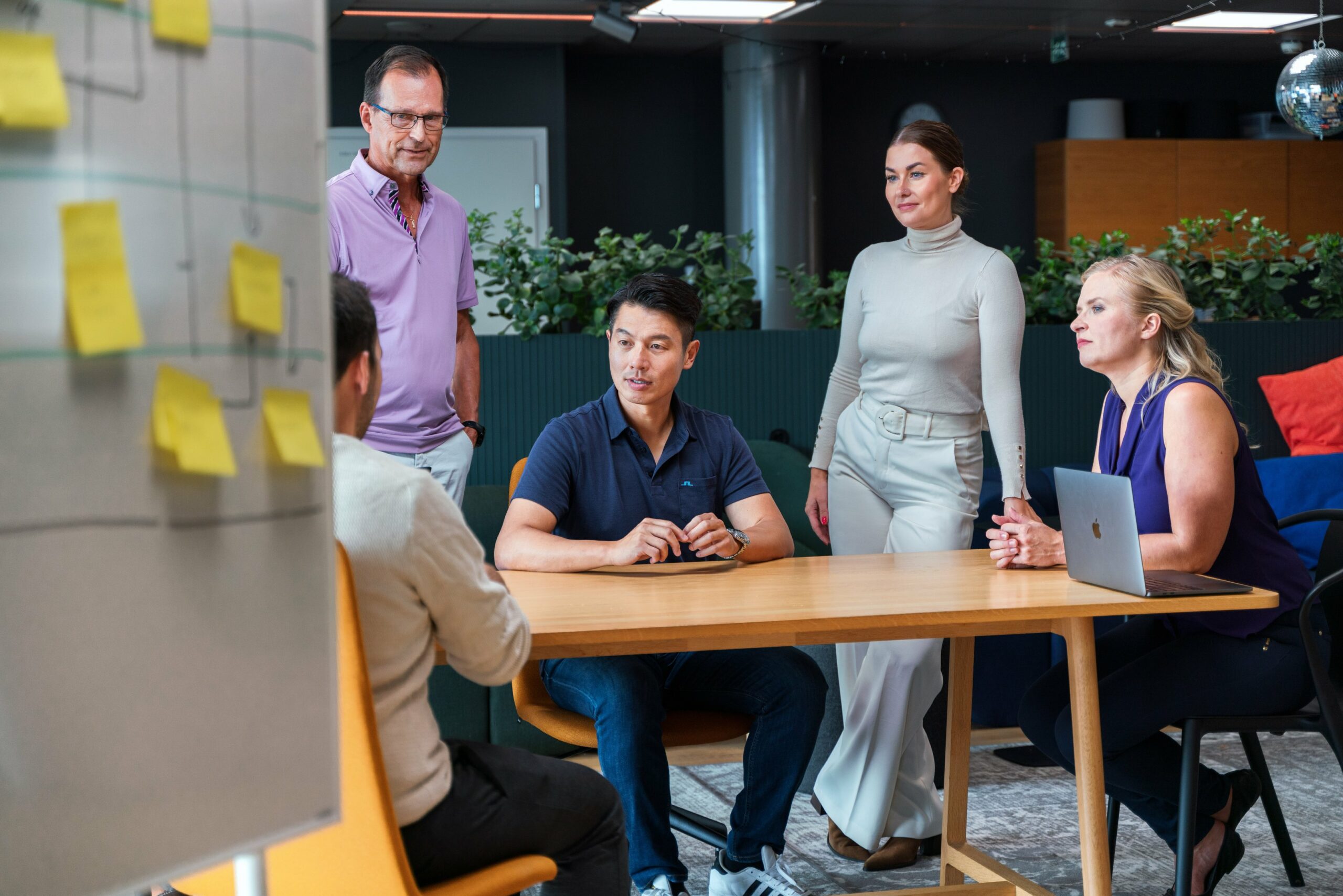Digital transformation at its best is a clear path that starts with crystallizing the vision and continues with building a foundation, followed by acceleration of core business operations. The main reasons why the vision remains a distant dream are the late inclusion of people and stiff adaptation of mindsets and operations.
Usually, transformation requires quite profound updates in the system environment and a change in key systems from server rooms to the cloud or at least to a hybrid world.
At this very moment, CEOs, CFOs, and CIOs in many organizations struggle with the fact that their digital transformations are not proceeding fast enough. Renewal initiatives do not reach the aimed goals and expenses get out of hand. A major part of the IT budget might go to maintaining systems that have already long been out of date. Simultaneously, leadership responsible for digital services is running out of patience: even basic tasks get difficult to execute when the basis for digital transformation is weak.
Many are dreaming of a modern, agile, and both humanely and environmentally sustainable digital service factory – and no wonder why. We have already supported numerous customers in their system environment renewal path, ranging from vision creation to cloud and hybrid strategies and roadmap executions. This way our clients have moved towards a modern factory, which produces accessible and high-quality digital services that are more and more predictive of clients’ life events and bring savings to society as well.
How is change management connected to the modernisation journey?
When thinking about the renewal of the system environment, we notice that it is a change that concerns various of organization’s internal groups, partner networks, clients, and in the public sector also many public authorities. People might face changes in their employer, work tasks, colleagues, ways of working, everyday routines or systems to be used.
The change capability of the leadership teams, people managers, and program and project management is one of the key competencies that enable the benefits realization of the system environment modernization and the achievement of an agile digital factory.
During the modernization journey, we can identify for example the following changes impacting people:
- How to lead a change that impacts the people who have maintained and developed the old system environment? Their work might face multiple fundamental changes, which require careful preparation and listening to the concerns of individuals. Human resource management skills are essential in addition to change management capabilities.
- How to lead a change that builds new ways of thinking and abilities to enable and scale agile digital development? Adopting new things requires willingness to learn, understanding of what changes for oneself, and ability to start working in new ways and create new routines that replace old mindsets and procedures.
- What is the change in development and portfolio leadership? How to get the management team change their behavior and to support the chosen development method?
- How to get the entire staff to adopt new mindset and routines that reinforce the cybersecurity culture required by the cloud model?
- And last but not least – What does this all mean for the customers?
Step on the path of modernisation
What if you had a solid path from system legacy burden to a modern & scalable digital service factory that enables agile development of services and business acceleration?
Leading change – what is it all about?
When talking about system environment modernization, the term leading change or change management rarely gets mentioned in the discussions – let alone in the budgeting, planning, and execution. Except, when everything does not go according to the plan, and someone starts to wise off about lack of change management.
First, let’s shed some light on what we in Gofore mean by change management. Auli Packalén heading our change capability development services points out in her blog:
“When one person hears the word change management or change leadership, it brings to his mind the worst layoff experience. For another one, it is just psychobabble. A third person might think of it as the necessary evil in projects – creating a communication plan. The fourth person links it to scope changes in projects. The fifth one is thinking about the IT world with servers and all. And for the sixth person, it doesn’t mean a thing.”
For us, change management includes everything that helps people
- become aware of what will change and why
- understand what will change in practice
- accept the changes
- feel in control of the change
- make the change meaningful
- support colleagues and subordinates in change
- learn new things required by the change
- adopt new routines
- unlearn old habits
- maintain performance during the change and
- stick to the new ways of working.
We are here to support you also with leading change
Gofore is the largest Finnish organization specialized in change execution with nearly 100 change management experts. We help our customers view changes through three lenses – people, business, and technology – and ensure that the technical side and the people side of the change go hand in hand.



